#well the demon was never sincere in its care for the dungeon lords
Explore tagged Tumblr posts
Text

Reading this particular chapter again and there is just something with the way the demon talks to Mithrun as if they are longtime friends.
Which they were, in a sense.
Whether the demon's care was sincere or not, the demon knew most, if not all, parts of Mithrun's life. His struggles, his insecurities, his desires. But it's not because the demon was an omniscient being. No, it's because the dungeon lords deliberately trusted this being with everything that they carried in their hearts. And the demon delivered...until it got hungry.
I can see at some point of Mithrun's dungeon lord days that he would tell this demon about his Canary life and why he hated it, leading to that panel.
The demon admonishing Mithrun with the things Mithrun told him in the past. And Mithrun just going ham against the demon for daring to do that after leaving him for dead.
#dungeon meshi#dungeon meshi spoilers#mithrun#mithrun dungeon meshi#mithrun of the house of kerensil#well the demon was never sincere in its care for the dungeon lords#like what kabru said the demon is like a con artist just parroting words that people like to hear#the demon was a mimic basically#but i don't think it was malicious; it's not even capable of being that#in the end of the day it's power#it's a being far far removed from what people and animals and other living things on earth are#it likes to eat so it will eat and so that is that#but anyway the point is is that it is kind of messed up the demon talks to mithrun that way
344 notes
·
View notes
Text
Isekai, Ranked
If Anime is escapism, there is no better way to escape than plunging Into Another World, where our niche skills and routine possessions may shake the fabric of reality! From MMO-inspired, to hard fantasy, there are many types of shows on this list but no movies nor series we haven’t seen recently. Bring all disagreements to the comments below!
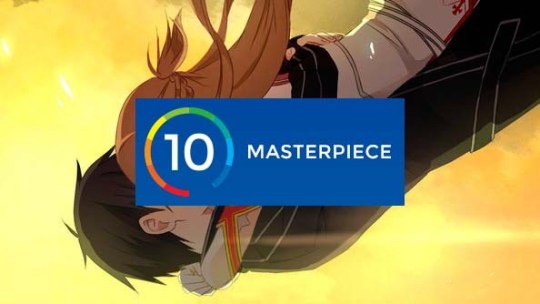
1. Re:Zero − Starting Life in Another World Re:Zero takes Isekai’s love for fish-out-of-water stories on step further: through brutal, expectation breaking blind sides, it makes the viewer a fish out of water too! Dripping with fantastic animation, Re:Zero true strength is the balance of its highly detailed world without over explaining its magic system, time loop mechanic and political systems. It also earns bonus points for limiting the application of its protagonist’s powerful magic and technological advantages.
2. Sword Art Online (1st season) In the narrowest of second places, SAO pairs top shelf animation with an approachable cast and easy to appreciate central conflict. Its lovingly constructed MMO setting aside, Kirito’s mistakes and occasional darkness elevate him above his potentially generic good-at-everything character type and Asuka plays the strongest heroine/love interest on the list.
3. Now and Then, Here and There Imagine if Digimon told a bleak about story sex trafficking child soldiers trapped on a waterless world with a maniac king? NTHT’s intense swerve from adorable into darkness is on par with Re:Zero and, much like Natsuki Subaru, HTHT’s Shu must rely on ‘durability’ and ‘heart’ to make it through. While some of it’s later tragic moments are predictable, this f’ed-up little anime scores major points for telling a complete story and having that story grow Shu from simpleton into a conflicted young adult.
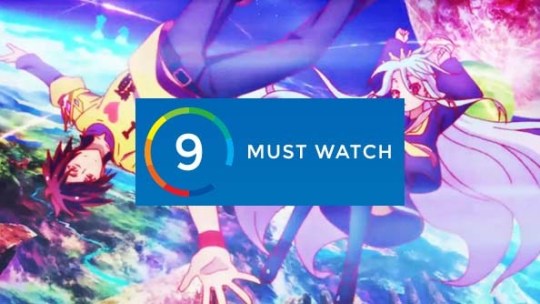
4. Gargantia on the Verdurous Planet While Red’s post-earth scifi origin may stretch the common definition of Isekai, being trapped in a primitive culture that treats him (and his AI-driven mech Chamber) like a hero of old does not. Beautifully, Gargantia flips the script and makes Red’s overwhelming power, and killing in general, at odds with the local people.
5. Yōjo Senki / The Saga of Tanya the Evil Give us World War I with magic, a gender swapped villain as our protagonist, and God as our antagonist, and you’ve given us something pretty damn original. Like Gargantia, this reborn in another world captures thinking differently about the world can be as powerful and terrifying as unworldly strength. Without question, Yojo Senki’s cast is the most uniquely imagined on this list.
6. No Game No Life Like Tanya, the Blank twins piss off god and are sent to another world as punishment. However, their punishment is much more stylish and… harem. Underneath NGNL’s acid-soaked panties, over the top protagonists and the psychedelic color pallet, lives a show featuring thoughtful puzzles and imaginative spins on classic gamble to win story telling. Sadly, its story ends unfinished…
7. KonoSuba One part jab at Isekai and one part love letter to the starting town of every fantasy MMO, KonoSuba is all parts ruthlessly funny! While this reborn in another world (with a goddess!) show is not be as smartly written as NGNL, and it becomes repetitive after a time, the constant frenetic action more than makes up for it.

8. Grimgar of Fantasy and Ash Quiet, thoughtful, and full of sadness, this hard fantasy Isekai doesn’t care if its heroes are reborn in another world or trapped in a dungeon crawl afterlife. Building family bonds and connecting with people who would not normally be friends is all that matters… and it’s lovingly animated to boot!
9. ReCreators As a reverse Isekai, ReCreators distinguishes itself by bringing the other world to us. The experience is fantastically animated and packed with clever dialog that somehow breaths sincerity into a profoundly silly plot. The cast is quite diverse, both in design and personality, which keeps the action fresh, yet somehow cohesive throughout. It’s only major flaw is, the final act, which is way to drawn out.
10. The Devil is a Part Timer No I’m not kidding! This reverse Isekai’s premise that the Devil is trapped in our world and must work at McDonnald’s to get by is charming. While DiaPT’s humor isn’t particularly specific to the devil, the jokes are punchy, and the overall plot develops at a respectable pace. As an added treat, the opening gothic fantasy fight scenes are surprisingly well animated.
11. Log Horizon (1st season) Most exposition heavy, trapped in an MMO themed Isekai featuring ‘top ranked’ players crumble after a few episodes. More often than not, these shows try too hard to sell the coolness of their game worlds, user interfaces, and central characters. Miraculously, Log Horizon gets better mid season with a simple question: if former NPCs have personalities, can grow and learn, and even die, are they more human than the former players that dismiss them as background texture? Still, it takes Log Horizon six episodes to get going and good lord is it gray looking…
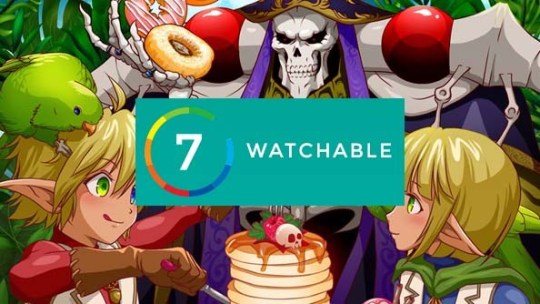
12. Overlord (3 Seasons) This transported into an MMO Isekai mirrors its main character: it is competent but not sure what it should be doing at any given moment. Sometimes the protagonists are villains and sometimes they are heroes. More often than not, characters are given lavish screen time to develop, only to be slaughtered whimsically. The resulting narrative is full of call backs and revealed foreshadowing… yet hasn’t gone very far in 3 seasons and hasn’t asked any interesting questions along the way.
13. El Hazard – The Magnificent World (OAV/TV) Predestined paradox, trans-dimensional time jumping high school students (and their drunk gym teacher) are trapped in an Arabian Nights’like land besieged by sentient bugs, a secret tribe of assassins from another dimension, and a death star like eye of god orbiting nearby. If you watched anime in the 1990s it will all be familiar but it still manages to feel original yet cohesive production. The character abilities are wonderful, the tragedy is nice, and plenty is left up to your own imagination to fill in the blanks. A bland, fault free, protagonist and a boy-crazy harem vibe are the only reasons it isn’t higher on the list.
14. Gate: Jieitai Kano Chi nite, Kaku Tatakaeri This invading the other world Isekai flips the script to deliver political intrigue, clash of culture, and commentary on Japanese society. It loses points for being a overly harem, relying on super dumb/super evil antagonists, and a dull protagonist but it’s fun enough to watch.
15. Drifters Stylishly violent, strikingly ugly, historical character filled and utterly bonkers, this reborn in another world Isekai’s uniqueness will hold your attention. Even if you do not want it to.
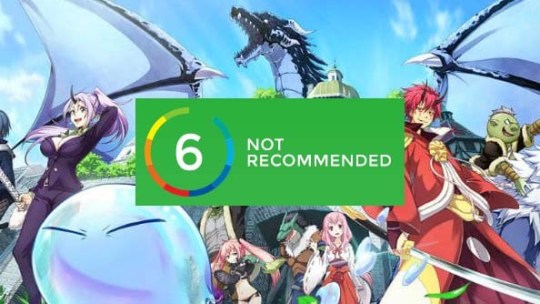
16. Rise of the Shield Hero (2 Seasons) On paper, this transported to an MMO world Isekai’s “treat the hero like crap,” “watch him accept the role of a slave-buying villain” and ultimately “rise to become the true hero” concept is great. Revealing that the world he’s saving may be less redeemable than the world the invaders are trying to save is also great. Too bad its padded and many of the arbitrary delays and narrative dead ends feel like cop outs.
17. That Time I Got Reincarnated as a Slime While it lacks the initial hardcore’ness of Shield Hero, this reborn in another world Isekai is pleasantly animated and full of heart. The idea that naming monsters grants them power is a pretty neat mechanic too. It just sort bounces from idea to idea without a sense of purpose of resolution. One minute it’s a story of unlikely friendship, then magic destiny, then town builder, then harem, and onto magic school and isn’t about anything in particular until a hastily thrown together plot ties it up at the end. It scores points for making its hero a slime… although the reborn aspect never feels played with or justified.
18. Angel Beats! If the gun fetish, kids fighting a loli-angel instead of attending school in the afterlife plot weren’t so dumb and drawn out, this rebirth story’s touching moments would push it much higher. There’s a really good tale of life cut short, reunion after death, and again after rebirth here and it gets major bonus points for finishing the story it had to tell. Totally squandered.
19. Death March / Kara Hajimaru Isekai Kyousoukyoku Like Shield Hero, this reborn in an MMO Isekai is actually quite good looking. However, its Gary-Stue protagonist, harem and absurd narrative padding make it far less interesting. OMG how many episodes are about making lunch?! That’s too bad because the concept of code-like “copy and paste” magic system is pretty neat.
20. Wiseman’s Grandson / Kenja no Mago Despite opening with a modern day man being killed, this reborn into a fantasy world Isekai is more Magic School than Isekai. The only thread that connects the protagonist’s lives is that he can look at magic with an eye for process instead of outcome. The result is harmless easy watching but harem elements, a slow pace and lack of getting anywhere narratively hold it back.
21. How Not to Summon a Demon Lord This summoned into an MMO Isekai starts off as charming, but ecchi-heavy, before abruptly turning dark at the end of the season. We’re talking ‘make a child watch as her best friend is slowly tortured to death’ and creepo ‘finger-bang a loli cat girl in order to give birth to the demon inside her’ level dark. While those elements elevate HNtSaDL above niche appeal of its harm and MMO content, they aren’t so interesting to earn my recommendation.
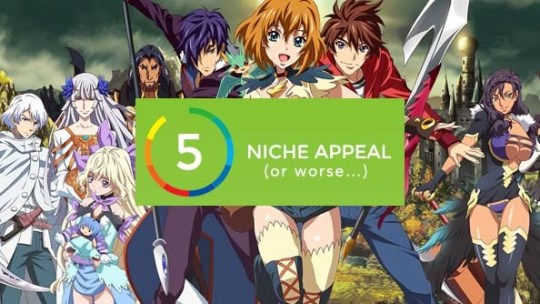
22. Problem Children are coming from Another World, Aren’t They? The non-ecchi poor man’s No Game no Life features a talking cat that only some characters can understand and dreadful music. TFW smooth jazz? There’s some cuteness to be had, and the solutions to gambling games can be clever, but the overall vibe is low energy. It loses drama points because its protagonist is as smart as a god and physically stronger.
23. Do You Love Your Mom and Her Two-Hit Multi-Target Attacks? This poor man’s Konosuba is occasionally funny, satire of RPG conventions and family relationships. Mama’s skill that interrupts whatever her son is doing, no matter what it is or where he is in the game world, is particularly charming. Unfortunately, there’s no avoiding the creepo factor of sexualizing that family relationship.
24. Restaurant from Another World My mom is secretly from another world and my restaurant’s front door connects back to that world each day is certainly unique, but it’s structured more like a food-porn show than Isekai. While the linkages of each patron become clear over time, few characters are not aware of those connections themselves. The result never feels like it gets anywhere.
25. In Another World With My Smartphone Stories without risk are still watchable when they immerse us an interesting world, or delve into niche details like food or how magic works, or sleeze us with harems and sex appeal. Smartphone fails all of these things. Worse, it does nothing with it’s one idea: protagonist Touya is reborn in a fantasy world with smartphone. Except, GOD GIVES HIM GOD TIER MAGIC FROM THE GET-GO! Ironically, Re:Zero and No Game No Life both use of a cell phones in more interesting ways, and Tanya’s God isn’t even comparable. Unoriginal, unfunny, not dramatic, not sexy, not worth watching.
26. Maou-sama, Retry! This transported to an MMO Isekai’s trash production values, and bizarre characters are hard to take seriously. The results are sometimes so terrible they are funny, such as incompetent background music transitions and detailed horses hiding at the edges of the frame. Sadly, a bland harem and complete lack of narrative objective kill the mood.
27. Isekai Izakaya Imagine a low energy, public access style show, with a tourism theme, that featuring a modern Japanese restaurant that serves fantasy world patrons…
28. Isekai Cheat Magician A loveless summoned to a fantasy world Isekai who’s protagonists are the most powerful and purely good characters could deserve a niche rating. Not this one. The narrative sort of ‘skips the boring stuff’ and, in doing so, skips character development. Hilariously, what the narrative does show is poorly animated, always underwhelming magic battle scenes or people standing around talking.
29. Endride Without dialog, this stumbled into a magic world Isekai’s vibrant color and crisp art would be watchable. The fact that the world is somehow inside of Earth’s core and the sparse use of mythology are unique, but its dumb-as-bricks whiny teen protagonists have the maturity of a small children. There are many unintentionally funny moments like scientists using gigantic laptops or the king’s magic weapon looking like a safety pin. Ultimately, the cast is so unlikeable that the show itself is unwatchable.
By: oigakkosan
4 notes
·
View notes
Text
HW4case Q2
TSR’s Code of Ethics
TSR is the company that created the popular board game, Dungeons and Dragons. It had humble beginnings, starting in a basement in 1974. The developers originally made it as a game to play with their friends but it quickly grew in popularity. The game drew upon popular fantasy lore and had inspiration from works such as The Lord of the Rings. (In fact, one of the races was initially named Hobbit, but due to copyright troubles the name was changed to Halfling.)
Not everything ran smoothly for TSR though, because the media and hysteria caused many to fear the game. Because some of its classes use magic, such as the Wizard, many thought it was secretly a game meant to lure young and persuasive minds into the occult. It sounds laughable now, but this mass hysteria over the boardgame itself had many influences because of the articles written about it, and even lead to a movie being made about the dangers of fantasy board games. (Tom Hanks starred in the film named Mazes and Monsters, and while it didn’t focus on the occult, it did show the main character struggling with finding the difference between reality and fantasy)
Of course, with such bad press was hurting the bottom line, and TSR started to hurt. These circumstances encouraged TSR to create a Code of Ethics to combat the bad name they had been assigned by society and the media at large.. This is another example of how fake news can cause some real harm, but nonetheless, TSR responded with a pretty decent code of ethics.
You can find the code of ethics in this article: Here
Questions:
1.) Is it ethical to tell players how to play a game with a certain ethical mindset?
If you believe in cultural relativism then no, but generally most subscribe to the idea that there is an absolute good and an absolute evil, at least sometimes. We live in a world of grey, but there are still certain acts that would be considered evil no matter what culture you observe.
I believe it is acceptable to encourage someone to have good beliefs, though I disagree with authoritarianism. Just ask the chinese how that is working out for them. They won’t give you an honest answer (for fear of death). That being said, a code of ethics is hardly like authoritarianism.
2.) What kind of ethics are portrayed by TSR’s Code of Ethics? (Follow link at top to see the full list) Utilitarianism, Hume’s virtue ethics, or deontological?
Upon reading the Code of Ethics, I leaned towards virtue ethics. It seems to focus on virtues that are popular and widely held in the west. In some cultures or some moments in time, they wouldn’t make sense but they represent our virtues of the twentieth and twenty first centuries.
They do also lean heavily towards deontological and utilitarianism as well because they are a set of “rules” to play by, and they are meant to help educate the players to make the world a better place. This is illustrated by the times in TSR’s code of ethics that it says you can speak of disabilities and deformities as long as it isn’t gratuitous and it helps to educate the players.
3.) Is this code of ethics convincing enough to outweigh what the media was saying about the game? (Does it come off as sincere, or simply trying to ease concerns so they can sell products)
It was convincing to me, but I am looking at it with the knowledge we have today. If I remove all of that and stop looking at it with hindsight, then I might have a different perspective on it. People were worried about the game having secret rituals to summon demons and such, and not to mention there was a LOT and I mean A LOT of social stigma associated with the game. That persists a little bit even to today, (The stigma not so much the demon rituals). If I was a victim of mass hysteria, I might view this material as a trick. “It seems nice, but that is all to make me drop my guard” etc.
Sometimes it is difficult to accurately predict how we might interpret information, but I like to think I am a critical thinker. Plus I don’t particularly care about social stigma. I probably would have looked into the game myself to see what all the hysteria was about. I guess what I am trying to say is despite me trying to play devil’s advocate, I just can’t bring myself to doubt the intention behind the code of ethics. It seems sincere to me.
4.) Are there any parts that were discussed that seem excessive or unnecessary?
There were parts regarding rape and things of that nature that felt out of place to me. Don’t get me wrong, I am 100% against rape, but I’ve never experienced anything even remotely close to that topic in any of the games I have played. When I read it, it just seemed to stand out to me, but that might be because in today’s society, we tend not to talk about that in such terms for fear of offending someone or re-traumatizing someone. I suppose it goes to show how the world has changed.
To play devil’s advocate once more, perhaps it is precisely BECAUSE this guideline was put into the Code of Ethics that I have never experienced anything like that in any of the sessions I have played. D&D has changed publishers since back then, but perhaps the Code of Ethics shaped how players look at the game.
A small bit of evidence that might support this theory of mine is that in the D&D Adventurer’s League, a player is not able to participate if they are evil. This could reflect the First Code listed in TSR’s code of ethics that good shall prevail over evil. Food for thought.
5.) Would it be unethical to plagiarize a fantasy world like D&D? Even if a few of the details were tweaked?
I wrote this question because of a stipulation that was added to the code of ethics, precisely for this reason. Apparently some of the previous workers of D&D broke off and wrote unauthorized content for the game.
My answer is that I don’t think it would be fair to label such actions as unethical. I say this for two reasons.
D&D got its start by essentially borrowing from popular fantasy themes such as Lord of the Rings and Van Hellsing. As I mentioned earlier, D&D even had a race named after a race from Lord of the Rings at one point.
It is fantasy, it is hard to copyright an idea such as fantasy. One should be able to borrow themes from D&D because D&D is itself borrowing from other sources of inspiration. Just because it became popular doesn’t mean that it suddenly can rewrite history now that it is a big dog.
Of course, I always try to consider multiple points of view. If this stipulation was added to the Code of Ethics because such plagiarism was negatively impacting the game, (I.E. Unauthorized content was being grotesque in some way and it was reflecting poorly on the actual company) then I would totally agree with what TSR did and I would find it completely ethical.
Three Standard Questions Plus One
1.) How can you apply deontological ethics (rule-based) to this case?
The Code of Ethics did serve as a set of ethical rules that players and dungeon master’s should abide by. They also seemed to follow in-step with the rule of law (Even saying that there shouldn’t be themes that show that law enforcement is corrupt, or use a parody of real figures).
2.) How can you apply utilitarian ethics (similar to consequentialist ethics) to this case?
The Code of Ethics seems to have a theme of promoting the education of why certain themes are bad, without overusing the themes. For example, it says you can discuss themes of slavery, but it has to be represented as a terrible system that needs to be abolished. Thereby promoting a positive interaction and providing a teaching moment. This is just one example of how the Code of Ethics seems to prioritize the well being of all and trying to have a positive impact that is meant to carry over to real life.
3.) How can you apply virtue ethics (character-based) to this case?
Virtue Ethics is written all over the document. It describes such themes as good and evil, and condemns excessive violence and grotesque nudity/sexual themes. All of these behaviors are virtues that are respected in the west, and represent that way of thinking. It is because of the amount of themes like this presented that I thought the Code of Ethics most resembled virtue ethics.
4.) What connection can you devise to computer security?
The ideas presented in TSR’s code of ethics is very much the same as what we use in the world today. These guiding principles are still with us, even for those that do not play D&D. TSR didn’t create the idea for these ethics, they merely wrote them down for their game. That means the connection to computer security is not an obvious one but it goes deeper than a mere tabletop and transcends into something deeper.
TLDR: I believe it is the mindset the developers had, as well as the connection the majority of westerners have as far as their beliefs. The time’s have changed a lot since the 70s and 80s but most if not all of the items written in this Code of Ethics is still applicable in 2020.
0 notes